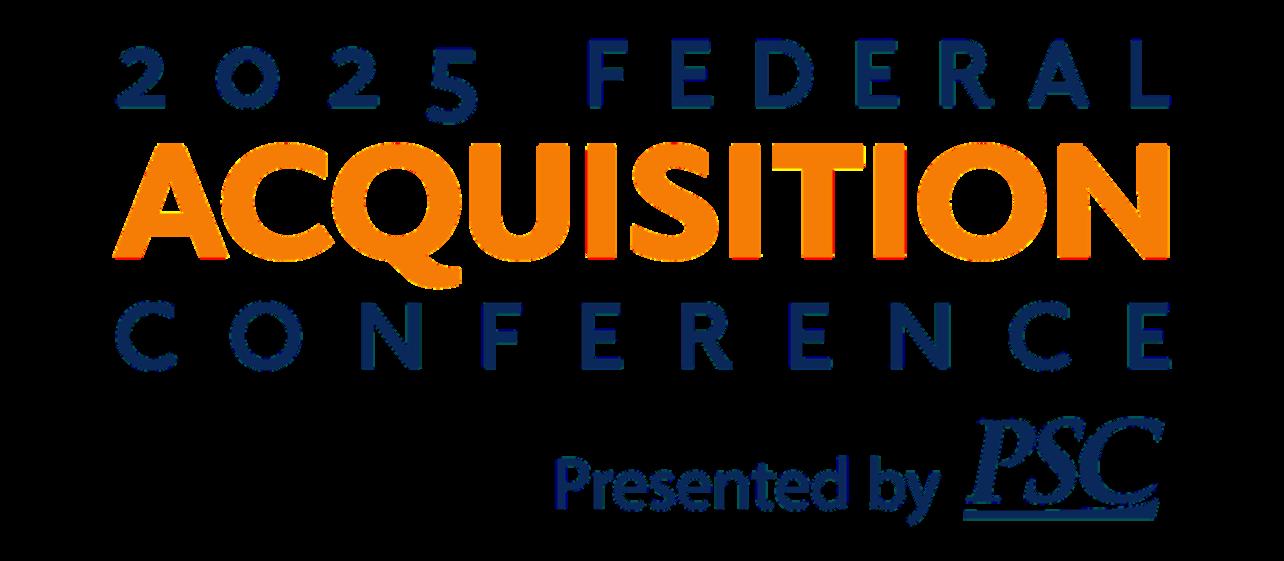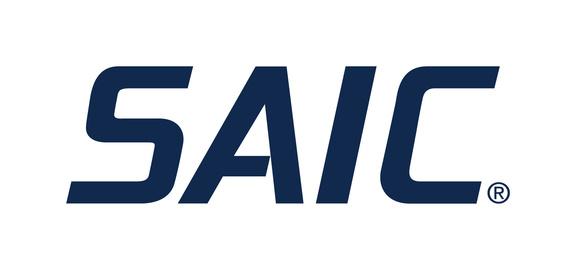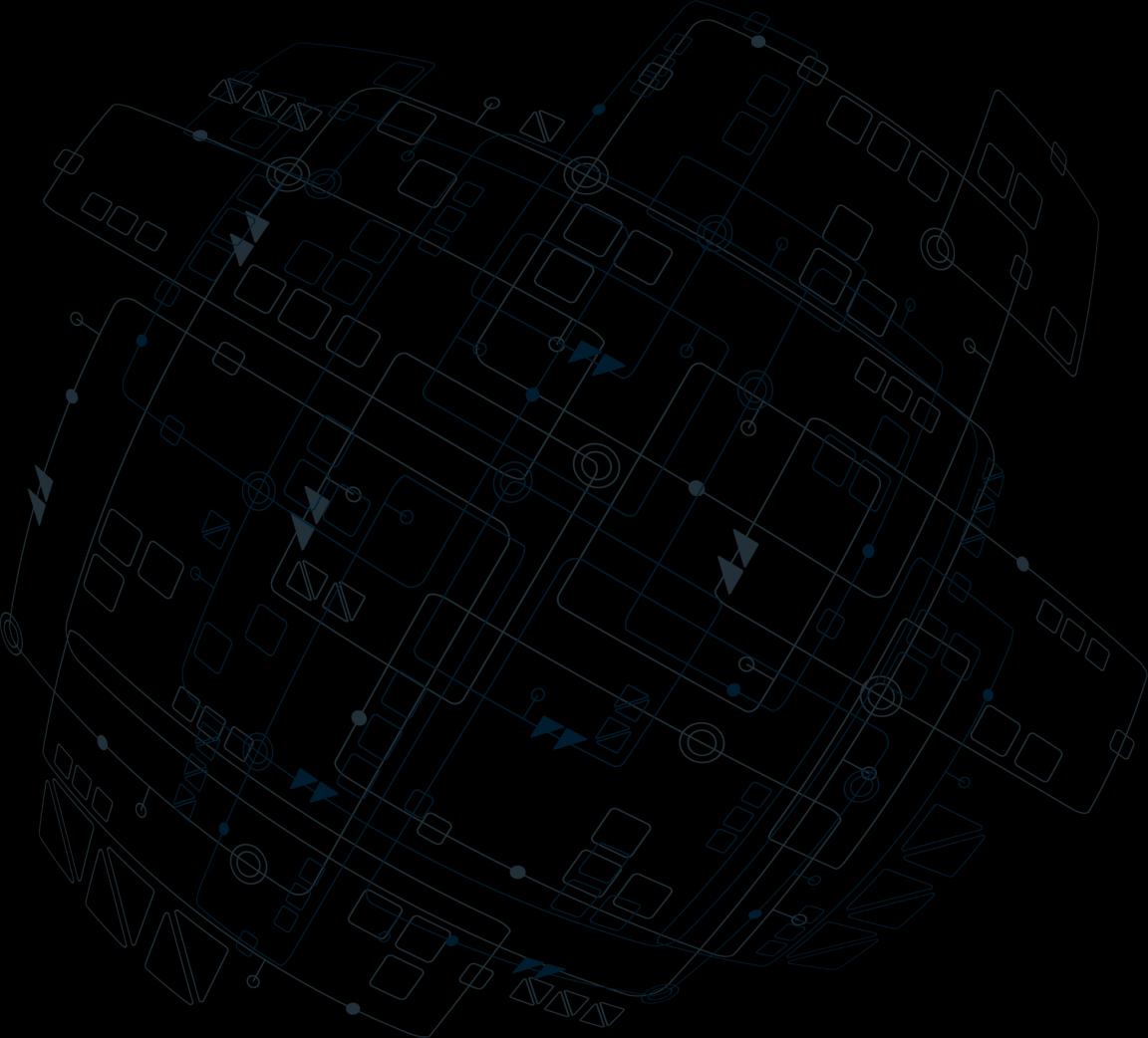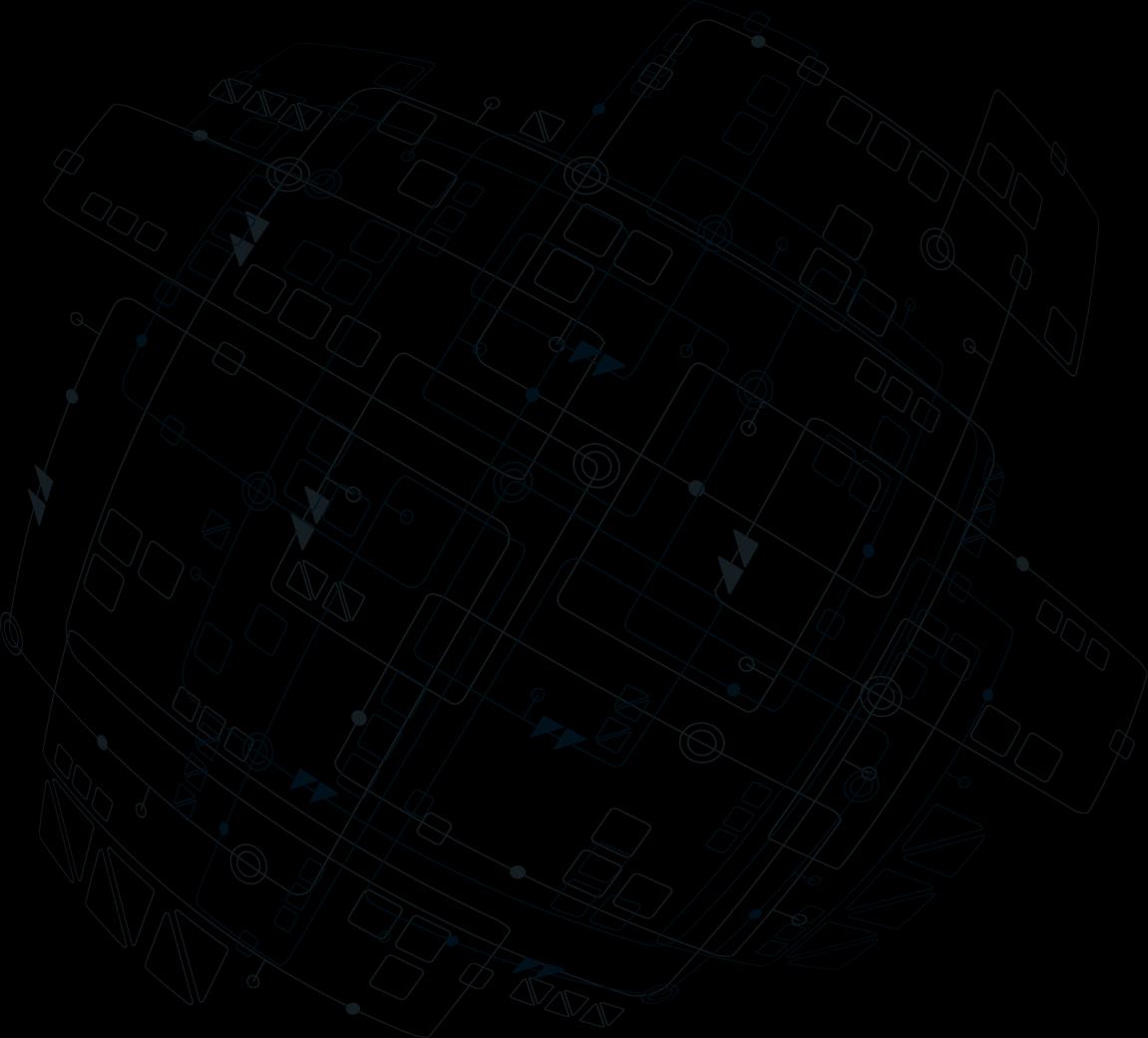

THOUGHT LEADERSHIP COMPENDIUM
Released on June 3, 2025

FEATURED ARTICLES BY





3 Fraud, Waste, and Abuse Prevention Platform: An Innovative Solution to Mitigate Fraud, Waste, and Abuse— Before and After Payment


7 Choosing The Right ERP In Regulated Industries
12 Commercial Technology Without Mission Integration Threatens Our National Security
Fraud, Waste, and Abuse Prevention Platform An Innovative Solution to Mitigate
Fraud, Waste, and Abuse— Before and After Payment
Fraud, waste and abuse (FWA) pose significant challenges to government agencies and organizations worldwide. These issues not only lead to substantial financial losses but also undermine public trust and impact the effective and efficient delivery of services.
The FWA Prevention Platform is designed to revolutionize the way federal agencies manage payment integrity. By integrating diverse data sources and sophisticated algorithms, the platform proactively identifies and analyzes improper payments. Key components include risk identification, resolution workflows, and seamless data access, ensuring comprehensive prevention and post-payment analysis.
The FWA Prevention Platform represents a significant advancement in payment integrity management, offering federal agencies the tools they need to prevent and analyze improper payments effectively. Through strategic partnerships and cutting-edge technology, Momentum® is poised to deliver unparalleled value and security.
How does it work?
Core financial system integration with new capabilities
Momentum Enterprise Suite is a Commercial Off the Shelf (COTS) solution with a built-in integration to the Department of Treasury’s Do Not Pay solution. Momentum customers can integrate with Do Not Pay at the time of loan, grant, purchase or contract award and prevent the award prior to obligating government funds.
As illustrated in the below graphic, by combining Momentum’s core financial management capabilities with additional algorithms and data sets to evaluate risk of fraudulent payments, the FWA Prevention Platform can detect fraud before payment is issued. This is the result of a strategic partnership with TrackLight and running on Amazon Web Services (AWS) to bring combined capabilities for a unique, robust, intelligent solution for improper payments.
Fraud, Waste, and Abuse Prevention Platform Ensuring Payment Integrity for Federal Agencies
FWA Prevention Platform (with AI/ML/NLP)
Momentum or other agency systems
(ERP, grants, loans, benefits programs, etc.)
Risk identification and resolution workflow
Analytics & risk management
Advanced data access & management
Prevention services
Treasury CGI TrackLight AWS
Post-transaction analysis services
The FWA Prevention Platform analyzes data before payments are made, allowing agencies to identify and prevent fraud at the earliest stage.
The platform utilizes API integration to deliver precise risk ratings for real-time decision-making. By calling various algorithms, it verifies use cases and provides risk assessments based on program tolerances. This functionality ensures informed “proceed or do not proceed” decisions, enhancing payment integrity through the following:
Prevention services
• Real-time FWA risk identification with AI-assisted risk profiles and vast open-source intelligence records. Data on individuals and entities is run through analytic models to identify outliers and anomalies that merit further review.
• Fraud risk screening – proactive FWA detection and prevention models pre-payment.
Post-payment analysis
The FWA Prevention Platform allows optional enhancement of the FWA prevention solution with post-payment utilizing:
• Fraud analytics – post-payment FWA detection models, continuous monitoring, advanced AI, and a comprehensive fraud scheme library.
• Social network analys is – detection of high-risk relationships and networks with AI-driven summaries. Using public data and machine learning to identify relationships and map those relationships for government agencies, this includes:
– Identifying collusive relationships between entities currently receiving funds
–Identifying collusive relationships with bad actors who are not receiving program funds but may be negatively impacting the program
• Investigative LLM ag ents
–Human supervised and autonomous AI agents that leverage open source LLMs with open-source data to improve efficiency of fraud allegation management and investigations
– Generative-AI models to assess risk, flag fraudulent/non-compliant behaviors, identify government exposure and potential compliance violations; and intelligence reports that summarize findings
Benefits for agencies
Agencies leveraging the FWA Prevention Platform benefit from:
• Proactive identification and analysis: The FWA Prevention Platform integrates diverse data sources and sophisticated algorithms to proactively identify and analyze improper payments, enhancing payment integrity management.
• Comprehensive prevention and post-payment analysis: The platform supports prevention by analyzing data before payments are made, allowing agencies to identify and prevent fraud early. It also provides post-payment analysis to validate evidence and enable corrective actions.
• Core financial system integration: Built-in integrations with the Department of Treasury’s Do Not Pay solution allow agencies to prevent awards prior to obligating government funds.
• Real-time risk identi fication: The platform offers real-time FWA risk identification through AI-assisted risk profiles and intelligence records, helping agencies identify outliers and anomalies for further review.
• Powered by the Cloud: Leverages cloud computing’s power to deliver unmatched scalability, security, and performance. A cloud-native approach enables real-time processing of millions of transactions while maintaining the highest security standards required for federal government agency operations.
Expected outcomes for federal agencies
• Reduced financial losses: By preventing and detecting FWA early, agencies can significantly reduce financial losses associated with improper payments.
• Enhanced public trust: Effective management of payment integrity helps restore and maintain public trust in government operations and the efficient delivery of services.
• Improved decision-mak ing: Access to precise risk scores and comprehensive analytics enables informed decisionmaking, ensuring that funds are allocated appropriately and securely.
• Increased operational efficiency: Integration with existing financial systems streamlines processes, reducing the administrative burden and allowing agencies to focus on their core missions.
• Strengthened complia nce and accountability: The platform’s capabilities support compliance with regulatory requirements and enhance accountability through detailed reporting and analysis.
For two years, CGI’s Momentum was the first and only core Financial System approved by Treasury’s Financial Management Quality Service Management Office (FM QSMO) and stands out as the premier choice for agencies looking to enhance their financial operations. The FWA Prevention platform will be submitted to be listed on the FM QSMO marketplace.
• Optimized resource allocation: By identifying and addressing high-risk areas, agencies can allocate resources more effectively, focusing efforts on areas with the greatest impact.
Why choose the FWA Prevention Platform
The FWA Prevention Platform represents a significant advancement in payment integrity management, offering federal government agencies the tools they need to prevent and analyze improper payments effectively. Through strategic partnerships and cutting-edge technology, Momentum is poised to deliver unparalleled value and security.
Forged through strategic partnerships
The FWA Prevention Platform is the result of a strategic partnership with TrackLight and running on AWS to bring combined capabilities for a unique, robust, intelligent solution for improper payments. The partnership leverages each entity’s strengths to deliver a robust FWA solution.
About TrackLight
TrackLight provides AI-powered fraud detection and prevention solutions. Our mission is to create a safer, more transparent world by empowering organizations to proactively detect and prevent fraud, waste, and abuse. The TrackLight suite includes Due Diligence, Fraud Analytics, Social Network Analysis, and Agentic AI-powered Fraud Allegation Management. TrackLight uses over 1 billion open-source intelligence records, more than 3,000 fraud schemes, and dozens of expert-trained LLMs. For more information, visit tracklight.ai
About CGI Federal
CGI Federal Inc. (CGI), a wholly owned U.S. operating subsidiary of CGI Inc., is a leading technology and professional services company that serves federal agencies across defense, civilian, healthcare, justice, intelligence and international affairs. With nearly 8,000 professionals, we work with our clients to modernize government through innovative technology solutions, flexible delivery models and a commitment to achieve mission outcomes.
For more information or to schedule a demo, visit www.cgi.com/Momentum


Sponsoredby:
Regulated industries, such as aerospace and defense, government, and utilities, have critical compliance and data security needs, and focusing on selecting the right ERP system is paramount.



Choosing the Right ERP in Regulated Industries
September 2024
Questions posed by: Cognitus
Answers by: Mickey North Rizza, Group Vice President, Enterprise Software, and Jeff Hojlo, Research Vice President, Future of Industry Ecosystems, Innovation Strategies, and Energy Insights



How important is a platform approach to ERP for organizations in regulated industries such as aerospace, defense, government, and utilities?
Adigital platformapproach isveryimportantforregulated industriessuch asaerospace,defense,government,and utilitiesdueto thecomplexity ofbusinessprocesses, thetremendousamountofdata these organizationshave,and regulatorycompliance.Accordingto Worldwide IDC Global DataSphere Forecast, 2023–2027: It's aDistributed,Diverse, andDynamic(3D)DataSphere (IDC #US50554523,April 2023),themanufacturingindustrywill generateon average (varyingbysubindustry)81,877EB(or 82ZB)ofdata in 2030.Thisisup from "just" 2EBin 2022.To putthatin perspective, by2026,manufacturingorganizationswill becreating7PBof data persecond.Thechallengeisthattheseorganizations don'thavethesystems,processes, and resourcesto takeadvantageofthisinformation:42%ofenterprises saythatthey underutilizedata.
Thismaybethecasebecausedata istheinputand theoutcome on which organizationsarefocusing,asdata isnecessary forapplications,models,and LLMs.Further,theinsightsand knowledgefromthisdata empowerorganizationsto innovate,meetcustomerneeds,and operatetheirbusinessesefficiently.When companiestakean enterprisewide platformapproach to data collation,analytics,and federation,regulatorycomplianceissimplified.
Cross-organization,cross-ecosystemERP platformshelp mitigaterisksand optimizetheopportunitiesassociated with this massivetroveofdata byestablishinga digital thread acrossthesupplychain forbetterinsightsand decision-making.This digital thread includesR&D and productdevelopment,procurement,contractsand financials,programmanagement, supplychain,production and operations,regulatory,and aftermarketservices.Usinga platformapproach,each ofthese teamshasaccessto the samedata.Theresultisfasterinnovation,a bidirectional flowofinformation acrossthe organization and ecosystem,reliableachievementofqualityand compliancegoals,anda unified approach to ongoing customerengagement.Embedded analyticsand AIcomplementeach oftheseareas.

How do private clouds make ERP modernization easier for regulated industry organizations with legacy systems?

Regulated industriesrequirecomplianceand data security.Privatecloudsmeettheirrequirementsand offera natural step in theprogression ofERPmodernization awayfromlegacyapplications. In IDC's2023 Worldwide Industry CloudPath Survey,25%ofrespondentsreported thatthemoveto thecloud strengthened theirregulatorycomplianceand 23%of respondentsnoted ithelped driveinnovation and/ordigital transformation activities.
An aerospaceand defensemanufacturertold IDC thatitrealized itwasrelativelyeasyto migrateto itsprivatecloudERP systembecausemovingto a moremodern system preservesexistingprocessesand data and minimizesdisruption.In addition,themanufacturerwasableto embraceinnovation and tailornewinnovativesolutionsto gain operational efficiencies.
Privatecloudsoffermorerobustbest practicemodelswith standardized workflowsand enableorganizationsto focuson theindustry'struedifferentiation areas.Asthedifferentiatorsarebroughtforward in therequired workflows,the organization can remain compliant with industry regulations.Privatecloudsenabletheorganization to build in whatit needs Theseworkflowscan then beintegrated into theERPsystemeitherbytheorganization orbyitsservicesprovider. Organizationsmovingto privatecloudsfind iteasierto retiretechnical debtassociated with legacysystems while capitalizingon modern cloud systemswith moreinnovation,such asAIand ML.
In addition,organizationsmovingto privatecloudsfromlegacysystems find they can moveto a managed services providerwhileoutsourcingcumbersometechnical aspects.Thisavenuehelpsloweroverall total internal costswhilealso helpingthecompany moveforward with a bettersystem foritsindustry.

For regulated industries, how are compliance, security, and automation enabled in private clouds?

Theprivatecloud bringsfull control to theorganization forinfrastructure,applications,and data asitisstored in a dedicated cloud environment. Thisdedicated environmentisisolated fromotherorganizationssuch that a companycan still maintain strictcontrols,and differentbusinessunitsand departmentscan usewhattheyneed. Organizationsin regulated industriesfind theycan reap thereward ofmoremodern systemsand enablemoreautomated workflows withoutlosingcontrol.Byincreasingthecontroland visibilityofthedata,companiescan customizethesystemsas necessary,such asfor securitypolicies,and ensuretheirown protection.IDC's2023Worldwide Industry CloudPath Survey found that24.5%ofrespondentsimproved theirIT securityby movingto theprivatecloud.
When organizationsutilizecloud serviceproviderswith largedatacentersand services,often called hyperscalers,for their privatecloud hosting,theyfind robustsecurity,compliance,and automation.Thesecapabilitieslowertheburden onthe organization ofestablishingtheseposturesitself Privatecloudscan bringmuch morecost-effectiveservice-level agreements.Even ifa companyoutsourcesthehostingservices,benefitsfromthird partiesusuallyincludeguaranteed uptime,backup and recovery,disasterrecovery,and securityelements(physical/cyber).


How is AI impacting regulated industries, and what does this mean for ERP?

Let's firsttalkaboutthedifferentelementsofAI.TheseincludeML,deep learning,automaticspeech recognition and natural languageprocessing(NLP),and generativeAI(GenAI). MLalgorithmshavebeen builtinto applicationsto automateworkflowand routinesand analyzedata.Deep learning(a subsetofML)leveragesneural networksto simulate human decision-making.NLPisused to enhanceinformation searchesand systemusabilitythrough textand speech data,enablingtoolssuch aschatbots.GenAIenablesusersto createnew contentin responseto shortprompts. RegardingGenAI,theleadingusecasesthatregulated industryorganizationsexperiment with includequality and complianceverification,strategicsourcing,regulatorycompliancesubmissions,contractcreation,and predictive maintenance.
In supportofthesevarioususecases,ERP can provide a platformfordata,applications,and analyticsthatsupports operation and decision-making.AIembedded into ERPsystemswill enablebetterprocessautomation,augmentation of skillsand knowledge,predictiveanalyticsforproactiveservice,and a reduction ofthecostofquality. Wealso seeAI playinga rolein improvingkeyfunctionssuch ascontractlife-cyclemanagement both thecreation and ongoing managementacrossthesupplychain.
Itisimportantto notethata hybrid public/privatecloud approach will beimportantforcompaniesin runningtheir business.Thecloud providesorganizationsin regulated industrieswith benefitssuch asimproved global collaboration and R&D,easier(and somewould saymoresecure) sharingofdata,and improved supplychain visibility. However,there arealso nativestoresofcompliance-related data,aswell asengineeringand R&D intellectual property,thatorganizations do notwantto sharein thepublicsphere.In thisageofadvanced AI,companieswill also wantto keep someAImodels privateand notexposed to outside, nonpartnerorganizations.

Connecting the aftermarket services process upstream to supply planning, contract management, and procurement is critical. Where are most companies in their maturity, and what are their expectations for modern ERP to support this?

Connectingtheaftermarketprocessto product,manufacturing,and supplyplanningand execution islargelyimmature in mostcompanies.Thereisa recognized need to "closetheloop" acrossthischain,buttechnology,organizational limitations,andinertia preventthisfromhappeningconsistently. Theend resultsaretwofold:servicedeliveryresponse timewill beslowand organizationsfail to learn overtimefromtheserviceand customerexperiences, meaningthey continuemakingthesamemistakes. Havinga closed loop to and fromcustomerand field servicesenablesa fast responseto opportunityorissue,leadingto a bettercustomerexperiencethatdrivesfuturerevenue.
Ascompaniesmoveto thenextgeneration ofERP,theserviceto supplychain integration becomesmoreprevalent.The expectation formodern ERPisthatdata modelsare connected,and decision supportisenabled through AI/MLfor enhanced predictive,planning,and forecastingcapability.In IDC's2024 Global Supply ChainSurvey,oneofthetop 3

prioritiesforsupplychainsoverthenext12 monthsisto improvesupplychain resiliencythrough bettervisibility. Complementingthis,onlinetransaction processingand onlineanalytical processingon thesameplatformprovidemore dynamicmaterial requirementsplanningand supplychain modelingcapabilities.In addition to AI,technologysuch as augmented realityand digital twins(2D or3D) enableorganizationsto workin a blended physical and digital way.This could beto visualizeproducts,assets, processes, and data in supportofenterpriseand ecosystemoperation.IDC'sFuture ofIndustry Ecosystems Survey showsa desireto applyvisualization to productand servicedevelopment,customer supportand issueresolution,trainingand education,andimproved customerexperiences.
About the Analysts

Mickey North Rizza, GroupVice President, EnterpriseSoftware
Mickey North Rizza is group vicepresidentfor IDC's Enterprise Software. She leads theEnterprise Applicationsand Strategies researchservice alongwitha teamof analysts responsible for IDC's coverageof nextgeneration of enterpriseapplications includingCXmarketingand sales technologies, digital commerce, enterprise assetmanagementandsmartfacilities,ERP, financialapplications,procurement, andprofessional services automationand related project-based solutions software
Jeff Hojlo, ResearchVice President, Future of Industry Ecosystems, Innovation Strategies, and Energy Insights

As ResearchVice President, Future ofIndustry Ecosystems, Innovation Strategies,and Energy Insights atIDC, Jeff Hojlo leads one ofIDC's Future Enterprise practices atIDC the Future of Industry Ecosystems. This practice focuses on threeareas thathelp create and optimize trusted industry ecosystemsand nextgeneration value chains indiscrete andprocess manufacturing, construction,healthcare,retail,andother industries:shareddataand insight, shared applications, and sharedoperations and expertise. Mr. Hojlo manages a group focusedon theresearchand analysis of the design, simulation, innovation,productlifecycle management(PLM),and service life-cycle management(SLM) market, includingemergingstrategies across discrete and processmanufacturingindustry such as productinnovationplatforms and the closed loopdigital thread ofproductdesign,development, digital manufacturing, supply chain,and SLM.

MESSAGE FROM THE SPONSOR
Streamlinegovernmentcontractingandsupportend-to-endcompliancewithinregulatedindustries.
Cognitusisan SAPGold Partnerspecializingin theimplementation,deployment,and supportofSAP solutions. They offera rangeof services,includingSAPS/4HANAintegration,RISE with SAP,cloud solutions,application management, and end-to-end digital transformation andarea go-to partnerforglobal governmentcontractors.TheirAI-powered solutions,co-innovated with SAP,help businessesmaintain regulatory compliance,data migration,streamlinecontract lifecyclemanagement,acceleratereal-timebillingand enhanceaftermarketprocessesto maximizevalueand gain a competitiveedge.
Formoredetails,pleasevisit:https://cognitus.com/
IDC Research, Inc.
140 Kendrick Street
Building B
Needham,MA02494, USA
T 508.872.8200
F 508.935.4015
Twitter @IDC
blogs.idc.com
www.idc.com
This publication was produced byIDC Custom Solutions.The opinion, analysis,andresearchresults presented hereinare drawn from more detailedresearch and analysis independently conductedand published byIDC, unless specific vendor sponsorshipis noted. IDC Custom Solutions makes IDC content availableina widerange of formats for distribution by various companies. Alicense to distribute IDC content does not implyendorsement of or opinion about thelicensee.
External Publication of IDC Information andData AnyIDC information thatis to be used in advertising, press releases, or promotional materialsrequires prior writtenapproval from theappropriateIDC Vice President or CountryManager. A draft of the proposed documentshould accompanyany suchrequest. IDC reserves theright to deny approval of external usage for anyreason.
Copyright2024 IDC.Reproduction without written permissioniscompletely forbidden.


By Toni Townes-Whitley CEO, SAIC

Introducing more technology isn’t enough to win America’s wars, secure its borders, or dominate in space.
America’s decisions, deterrence, and asymmetric advantage hinge on complex data and network integrations – across US services and coalition partners –combined with the precision deployment of tech-enabled munitions and weapons systems.
The Department of Defense needs private sector-led mission integration, ready to be rapidly integrated, secured and scaled, to DRIVE MISSION SUCCESS.

Threats, technologies, and capabilities are constantly changing, stressing America’s military and leaders. Winning conflicts around the world, and protecting our critical infrastructure at home, will require us to manage existing complexities by bringing together legacy and emerging technologies - smarter, at speed, and at scale.
Although government is always focused on mission, it is often not organized, funded or equipped to parse the full ecosystem of emerging and commercial tech. And though most commercial offerings offer incredible innovation, they typically serve a specific need well and are not designed to handle the complexities of military use.
To maintain our advantage in national security settings around the world, as well as the U.S. southern border and the space frontier, we need to find ways to bridge traditional military technologies with best of breed commercial services. We must rapidly, securely, and efficiently integrate the best commercial technology from any source – start-up to hyper-scaler – with existing military systems.
To succeed, we need mission
integration.
Built on deep mission experience, broad technology expertise and a robust industrial ecosystem, mission integrators harness the value of legacy government systems and combine that infrastructure with cutting-edge commercial solutions.
Simply put, products are used in a different way in a defense setting than they are in the private sector. Commercial solutions require unique, specialized understanding to integrate into a military environment.
Mission integrators are the only companies with access to the full breadth of innovation in the private sector, but also the know-how to make those commercial solutions military ready. They understand the protections you must take to put solutions in a defense environment against the challenges of well-funded state actors, whether that’s cyber readiness, threat awareness, user needs, data protection or myriad other challenges.
Mission integrators create digital twins, connect networks, integrate data, and leverage AI, cloud computing and cyber solutions to ensure that state-of-the-art commercial solutions actually work, even in the most hostile and difficult mission environments.
The result is a more enhanced, technology-agnostic “system of systems” that maximizes value, speed, efficiency, and –most importantly – mission outcomes.
MISSION INTEGRATION IN PRACTICE
What does mission integration look like in practice? Take the conflict in Ukraine. By integrating a handheld off-theshelf technology with both commercial and militarized telecommunication systems, drones developed by a defense contractor, and large-scale traditional missile systems, the U.S. empowered Ukrainians with the tools to change the battle’s course.
Normally, these technologies would have been incompatible, resulting in the costly and time-consuming development of new systems to meet the same need. But mission integration made it possible, in just three weeks from government direction to connecting networks, intelligence, and the hardware systems from multiple partner nations to final deployment of the solution.
As we think about near-term threats to our national security, we must focus on the Indo-Pacific region. Any future conflict in the Indo-Pacific will be complex and widely distributed, with U.S. and allied military forces engaging simultaneously across land, air, sea, space, and cyber.
Modern warfare requires advanced AI and real-time data analytics to integrate mission-critical capabilities for countering threats across many U.S. and coalition platforms. Adapting and integrating best-of-breed (i.e. vendor agnostic)

enterprise IT capabilities to meet mission needs will enhance situational awareness and understanding, enabling critical, timely decisions in combat. Mission integrators will be needed to coalesce the commercial, legacy, and emerging technologies to give us the speed, scale, optionality and economic efficiency we need to win.
VALIANT SHIELD ‘24 EXERCISE
Take the recent Valiant Shield ’24 exercise. There, the Office of the Under Secretary of Defense for Research and Engineering used mission integrators to integrate classified, multi-source intelligence data to provide an integrated threat tracking capability to U.S. and allied warfighters. This interoperability across domains and among allies requires the Department of Defense to execute on complex integrations of disparate systems brought by the different military partners and to develop innovative information architectures and technical solutions.
Valiant Shield’s success was the culmination of two years of close collaboration and joint innovation across the ecosystem of mission integrators and DOD not just commercial technologies.
Only by adopting comprehensive, integrated commercial and traditional government solutions, can we deliver the proactive detection, response and mitigation of sophisticated threats. necessary to strengthen our defense posture and enable the rapid and flexible deployment of all-domain warfare capabilities in the Indo-Pacific region and across the globe. Without that, we will not be able to defeat our adversaries.
Unfortunately, success is not guaranteed. We need to ensure that mission integration is nurtured and incentivized so the Department of Defense does not lose access to the companies serving this critical need.
Leaders in Congress and the administration are already taking important steps to build the acquisition process of the future, including the proposed FORGED Act (Fostering Reform and Government Efficiency in Defense). Federal acquisition reform is needed, and these efforts should be applauded.
However, these discussions too often focus on a standard paradigm of traditional vs. non-traditional contractors. Mission integrators do not fit neatly into either camp. They serve as the bridge between the two.
Decisionmakers should keep in focus the criticality of mission accomplishment and advance the changes necessary to address the full scope of problems and solutions.
Here are a few key recommendations to consider as they move forward:
The private sector is better suited than DOD to lead complex mission integration. Mission integration should be a directed procurement scope for all mission critical DOD programs. For major defense acquisition programs, consideration should be given to a test bed for architectures and systems to demonstrate integration.
New or existing commercial technology providers must demonstrate that their solutions conform to open architecture standards, such as the modular and open approach. Portions of their solution should be made open source, as Tesla did in 2014 with their battery technology, to prioritize advancing the ecosystem rather than maintaining exclusivity.
Mission integrators must be measured on outcomebased contracts with new types of mission-specific service level agreement aligned to mission outcomes.
We are strongest as a nation when we harness the full power of our industrial innovation ecosystem to meet our most pressing national imperatives. By adopting purposeful mission integration standards as part of a new approach to acquisition, DOD and national security agencies can escape traditional defense contracting siloes and catalyze the full strength of the U.S. industrial base. Only by integrating all of the best from emerging, commercial, traditional and nontraditional providers can we maintain our military preeminence, now and into the future.

ABOUT TONI TOWNES-WHITLEY
As the Chief Executive Officer of SAIC, Toni Townes-Whitley stands at the helm of one of the most dynamic mission integration enterprises in the gov-tech sector. A Fortune 500 company, with annual revenues of $7.4 billion and a workforce of 24,000 employees, SAIC has thrived under her leadership. Since being named CEO in October 2023, Toni has pivoted the company toward integrating emerging technologies like secure cloud, operational AI, multi-level security and digital engineering into complex mission environments across defense, space, civilian, and intelligence markets. Her tenure is marked by building SAIC’s innovation ecosystem, from start-ups to hyper-scalers; leveraging emerging technologies to drive demonstrable impact to SAIC’s customer missions and growing the company organically, strategically and profitably. She has introduced a compelling vision around five national imperatives that SAIC is dedicated to address over the next decade and set the expectation for balance between enterprise mindset and entrepreneurial execution across SAIC’s leadership teams. Prior to SAIC, she served as a President at both Microsoft and CGI, and she currently serves on the Nasdaq Board of Directors.


